0
Countries
Start marking places as "Been Here" to see how many countries you have visited
Browse countries10 legends among first skyscrapers of New York City
The main industrial achievements at the end of the 20th century – steel frames and elevators – opened the way to constructing tall buildings, which became known as skyscrapers. The first America’s skyscraper boom began at the end of the 1890s – the beginning of the 1900s. Architects created bright constructions, using the motifs of the well-known buildings, temples and cathedrals. What most remarkable skyscrapers were erected in Manhattan at the beginning of the 20th century?
One of the oldest skyscrapers of New York was built in 1899, on Park Row Street. The building is 119 meters high and has 26 full floors. Three more floors are located in the turrets on the roof. Until 1908, the Park Row Building had been the tallest office building in the world. The most beautiful façade of the building is the one facing Park Row Street. It resembles the oblong church of the Monastery of São Vicente de Fora in Lisbon. The balconies are decorated with caryatids, the rotunda turrets are covered by copper cupolas.
The Flatiron Building was constructed in 1902. Just for the year, at the junction of Broadway and Fifth Avenue, there appeared a building, which was 87 meters high and had 22 floors. The house in the eclectic style beaux-art ought to have borne the name “Fuller”, after the owner company, but the citizens interpreted the triangular form of the building in their own way and began to call it “iron” – this is exactly how “Flatiron” should be translated. The inhabitants and visitors took the building ambiguously: some considered it to be a nightmare, others – on the contrary – a steamer drawing Broadway after it.
The Met Life Tower was built on Madison Avenue for the insurance company “Metropolitan Life Insurance” in 1909, and immediately became the tallest in New York and in the world. It held its record of height – 50 floors and 213 meters – until 1913. The skyscraper represents a square tower covered by a hipped roof with clock faces, with a diameter of 8 meters, from each of the four sides of the building. Projecting the Met Life Tower, architects took the campanilla San-Marco in Venice as a model.
In 1910, there opened a 33-story building of the business center “Sinclair Oil”. Architects used gothic motifs while constructing it – turrets, lancet windows, and sculptures. The theory of building skyscrapers at the beginning of the 20th century was not elaborated enough, that is why engineers laid the enormous reserve of solidity – the foundation goes 5 floors down. Thanks to this, the house survived the terrorist attack of 11.09.2001 with superficial damage, when the magnitude of the earthquake exceeded 3,3. The skyscraper got its today’s name the “Liberty Tower” in 1979, having become a block of flats.
In 1912, in a financial block on Wall Street, there opened a building, which is now called “14 Wall Street”. It is 164 meters high, offices are located on 29 floors. Like the Met Life Tower, the construction of this skyscraper resembles the campanilla San-Marco in Venice. However, here architects went further: they put a 7-story pyramid (similar to the Mausoleum at Halicarnassus) on the top of the square tower. This pyramid became part of the logotype of the company “Bankers Trust”, for which the skyscraper was built.
In 1913, a new world record of height was established. The 241-meter 57-story Woolworth Building was constructed, which held first place until 1930. Even today the Woolworth is among the top 30 highest buildings of New York and the top 100 America’s largest skyscrapers. Its architect Gilbert Cass collected the traits of European gothic cathedrals in his project, that is why several years later Manhattan guidebooks began to call the skyscraper the “Temple of Commerce”.
1914 was marked by the opening of one of the biggest governmental buildings of the world – the Manhattan Municipal Building. The 40-story skyscraper rose at the height of 177 meters. The architect William Kendall designed it in the neoclassical style, being inspired by the antique masterpieces: thus, the passage under the building resembles the Arch of Constantine. The building is considered to have set the example for many skyscrapers, including the “Seven Sisters” – Stalin’s high-rises in Moscow. More than that, here for the first time in the world, a metro station was built on the ground floor of the construction itself.
Another remarkable skyscraper in Manhattan was built in 1915, and today belongs to the Equitable Life Insurance Company. The tower in the form of the letter N rises up to 164 meters. 176 thousand square meters of offices are located on 40 floors – at that time it was the biggest, as to the area, office building in the world. Interestingly enough, the building was erected as a solid wall, casting a deep shadow on the pavements. It became one of the reasons why a year later the city administration of New York issued the “1916 Zoning Resolution”, which required constructing the higher floors of tall buildings by steps, so that they did not shield the sun for pedestrians.
How one can create a bright skyscraper and carry out the “1916 Zoning Resolution” was clearly demonstrated by the architect Raymond Hood. The skyscraper, which was built for the manufacturer of heating radiators, was opened at 40 West Street in 1924. Black panels symbolizing a coal sheet, and golden sculptures denoting fire give the unique appearance to the Art Deco building. The entrance group is decorated with marble and dark mirror glass. Today the Bryant Park Hotel with 130 rooms is quartered there.
The 10 early skyscrapers of Manhattan are crowned by the New York Life Insurance Building. The architect Gilbert Cass, who had earlier constructed the Woolworth Building, created another skyscraper temple in 1926. This time the architect was inspired by the Salisbury Cathedral. The neogothic 40-story 187-meter construction is crowned by the pyramid, which is covered by mosaic gold. 25 thousand sheets of precious metal were spent on the gilding.

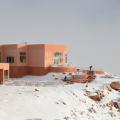
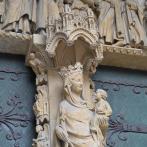
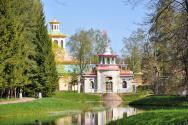
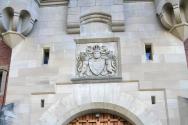



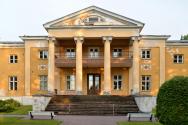
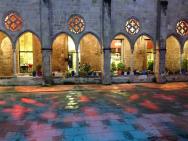

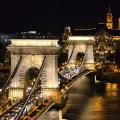
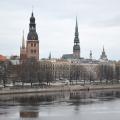
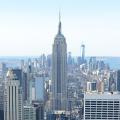

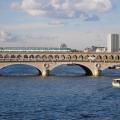
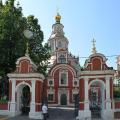
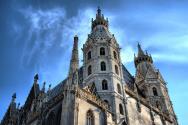

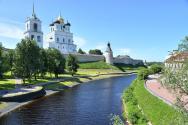


0 COMMENTS